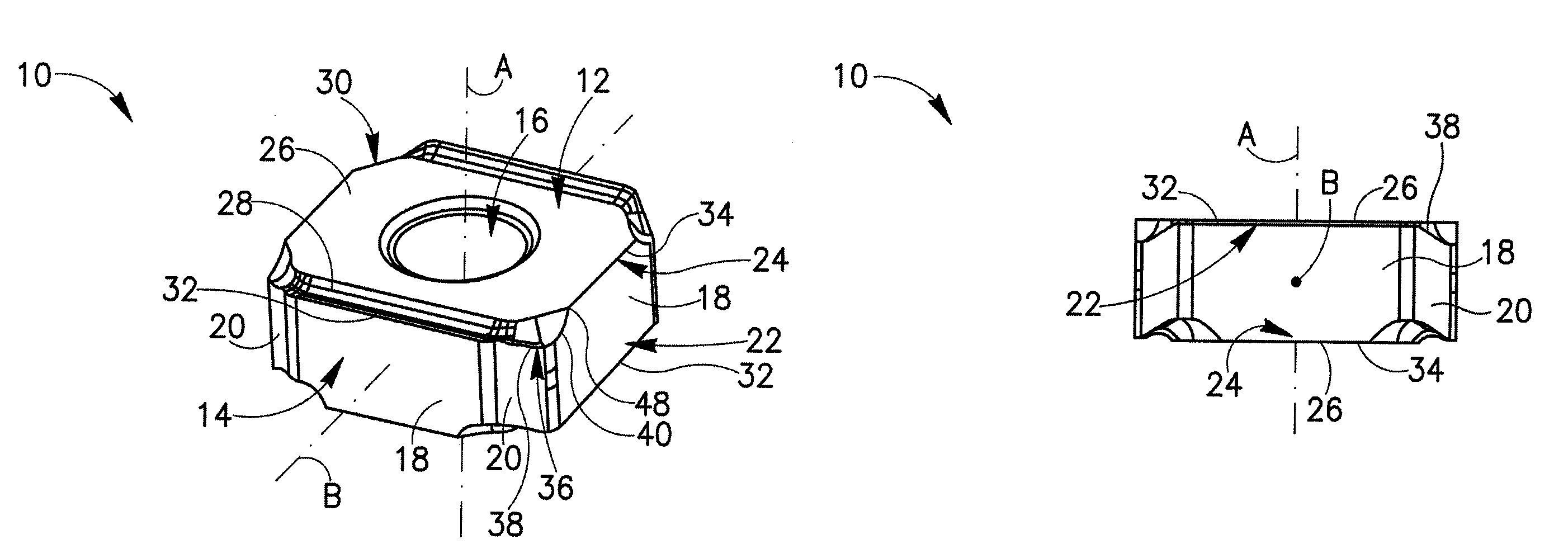Cutting insert
- Summary
- Abstract
- Description
- Claims
- Application Information
AI Technical Summary
Benefits of technology
Problems solved by technology
Method used
Image
Examples
Embodiment Construction
[0019]Attention is first drawn to FIGS. 1 to 3 showing an indexable cutting insert 10 which is typically manufactured by form pressing and sintering carbide powders. It should be noted that directional terms appearing throughout the specification and claims, e.g. “forward”, “rear”, etc., (and derivatives thereof) are for illustrative purposes only, and are not intended to limit the scope of the appended claims.
[0020]The cutting insert 10 has two identical opposing end surfaces 12 and a peripheral side surface 14 extending therebetween. The cutting insert 10 is of a negative type and therefore the peripheral side surface 14 is generally perpendicular to both end surfaces 12. A first axis A of the cutting insert 10 passes through the end surfaces 12 and a through bore 16 having a bore axis that coincides with the first axis A extends between the end surfaces 12.
[0021]The peripheral side surface 14 of the cutting insert 10 comprises four identical major faces 18 and four identical mino...
PUM
| Property | Measurement | Unit |
|---|---|---|
| Angle | aaaaa | aaaaa |
| Angle | aaaaa | aaaaa |
| Angle | aaaaa | aaaaa |
Abstract
Description
Claims
Application Information
 Login to View More
Login to View More - R&D
- Intellectual Property
- Life Sciences
- Materials
- Tech Scout
- Unparalleled Data Quality
- Higher Quality Content
- 60% Fewer Hallucinations
Browse by: Latest US Patents, China's latest patents, Technical Efficacy Thesaurus, Application Domain, Technology Topic, Popular Technical Reports.
© 2025 PatSnap. All rights reserved.Legal|Privacy policy|Modern Slavery Act Transparency Statement|Sitemap|About US| Contact US: help@patsnap.com



